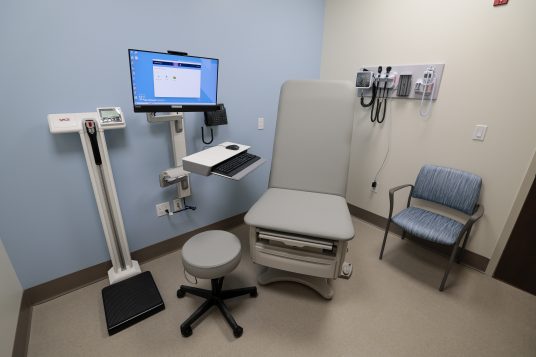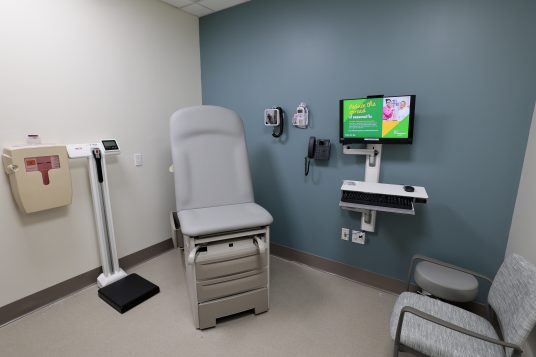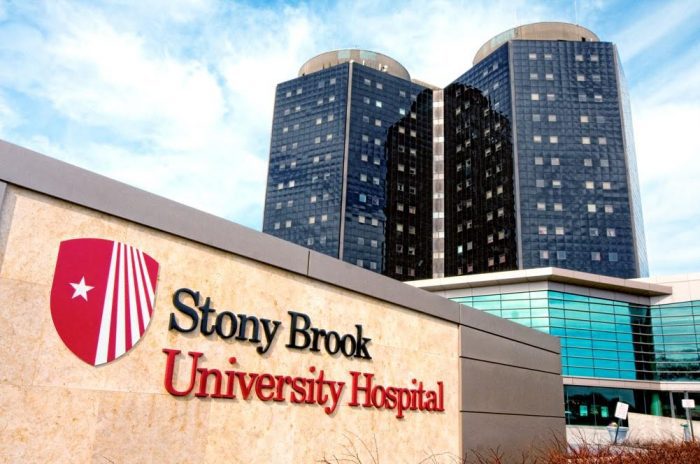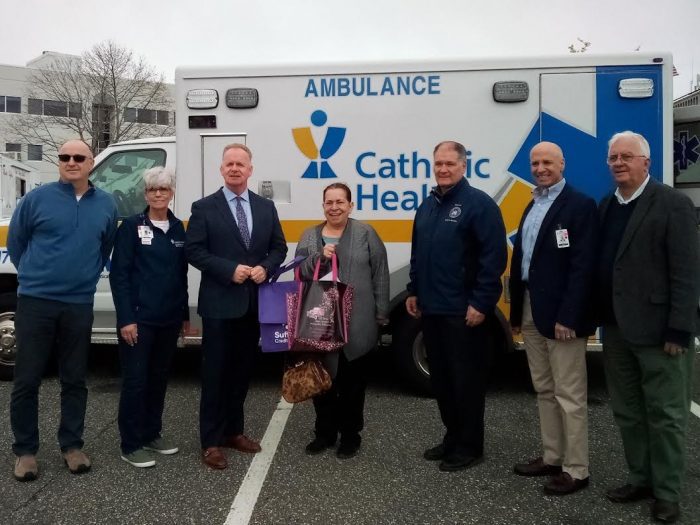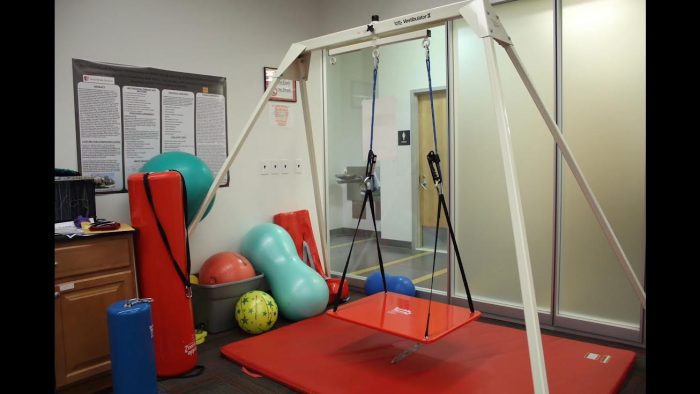By Serena Carpino
The Greater Port Jefferson Chamber of Commerce hosted its 15th annual Health & Wellness Fest at The Meadow Club in Port Jefferson Station on Saturday, April 13. Dozens of businesses — ranging from local clinics to internationally recognized organizations — attended the event to spread awareness of their efforts to help people create healthy habits and promote a wellness lifestyle.
Both returning and new businesses set up booths around the club. Some had attended for 15 years. For most, it was their first time at the Health & Wellness Fest.
Many of the booths were centered around heart and mental health, but there were also representatives from therapy groups, local gyms and several other related programs. However, there was one main theme across the board: preventative care. Officials spread awareness about early screenings for different illnesses, regular doctor checkups and healthy eating to prevent chronic diseases.
For example, the Fortunato Breast Health Center at Mather Hospital is promoting breast health through early mammograms — around age 40 for all women and earlier for those with a family history of breast cancer — as well as breast self-examinations. According to Maureen Burke, an employee at the center, they have many resources for women who have been diagnosed with cancer and are encouraging them to utilize these opportunities.
“We’re just making them aware of different programs that we have,” Burke said. One such program is a navigation system in which nurses follow patients through their cancer journey and are always available via phone to help schedule appointments or answer any other questions. In addition, they educate people on lymphedema and offer different blood tests through their oncology department.
Other programs, such as the Cornell Cooperative Extension of Suffolk County, focused on nutritious eating habits to promote longevity. This organization is advocating for the MyPlate meal plan, which stipulates that half of our plates should be filled with fruits and vegetables. In addition, Cornell encourages making better beverage choices and remaining physically active.
Linda Altenburger, a registered dietitian and the program manager for the organization’s diabetes team, said that Cornell has also partnered with WIC and SNAP-Ed populations and has offered many free resources to the community.
“We’re an outreach, you know, to the community … [we have] a lot of hands-on programs for children and adults, and overall just provide great resources so the community knows where to turn,” she explained. “We’re trying to reduce the incidence of diabetes and help those that are trying to lose weight and just how to cook healthy with more fruits and vegetables.”
Cornell Cooperative has also partnered with local farmers markets and Sun River Health to further their efforts for the community.
There were representatives at the fest from mental health groups such as LightPath Counseling Group and Youth Enrichment Services.
LightPath has 20 therapists that have various focuses. Janice Martin, director of LightPath and a clinical social therapist for over 20 years said, “We do anxiety, depression, relievement, pretty much everything. Each therapist specializes in something different.”
Youth Enrichment Services was founded in 1987, but recently added its Community Mental Health Promotion and Support division. The organization is mainly located in Brentwood and Islip, with several school programs focused on mental health and community drug misuse awareness. This is the first year YES has attended the Health & Wellness Fest. Fernando Hurtado, a member of the COMHPS division, explained that it “is a good opportunity because it gives everybody a way to bolster everybody’s mental health outreach.”
Other groups present at the event included Redefine Fitness, Stony Brook University Heart Institute, New York Blood Center, Port Jefferson Free Library, Countryside Animal Hospital and more.















